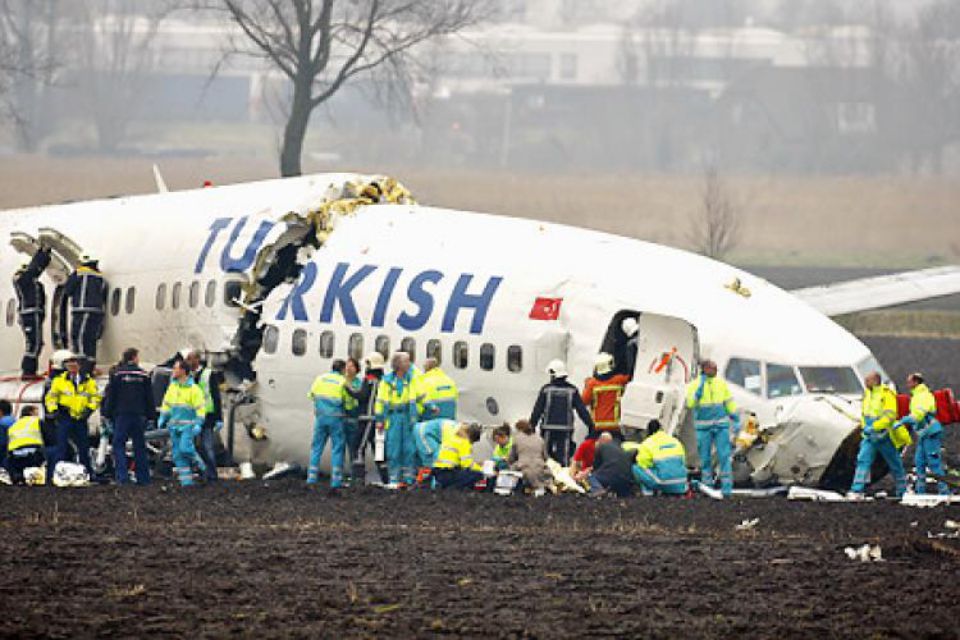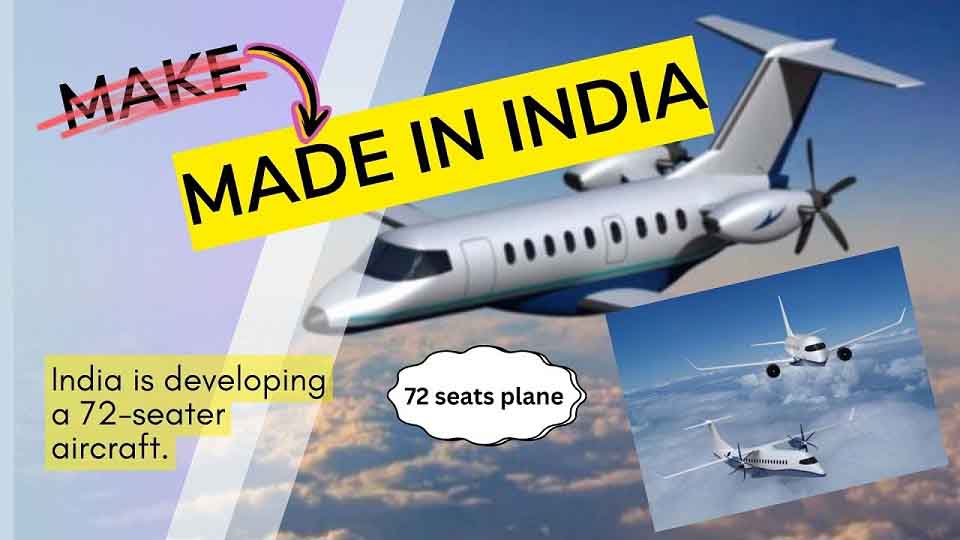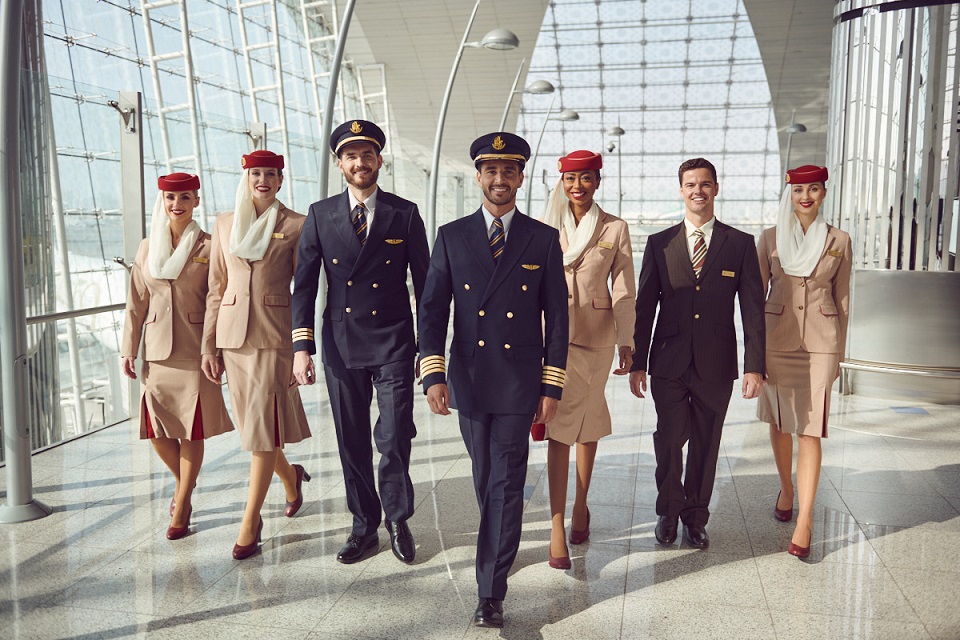Aviation
The horrifying accidents which changed aviation flying

Since the Invention of Aviation’s Birth, Incidents and Accidents had driven a plunging role into the Industry from the early era till the modern aviation. It was a nightmare to fly on those days, but even after achieving to fly successfully of all tough times Aviation accidents still exists.

What is Aviation Accident: As per the International Civil Aviation Organization (ICAO), any fatal injury or death caused to a passenger between his or her air journey after boarding or before deplaning will be considered as an aviation accident.

AIR FLORIDA FLIGHT 090 FELL INTO THE 14TH STREET BRIDGE KILLING 78 INCLUDING 04 MOTORISTS
Reasons and Possibilities: The possible reasons of why flight falls from the sky are many. A very few major reasons could be Pilot error, lack of adequate training, Mechanical failure, Human error, Technical snag, safety or security breach, poor weather conditions, miscommunication or terrorism.

LINATE AIRPORT DISASTER DUE TO MISCOMMUNICATION ON OCT 08, 2001
Bunches of air crashes such as Air France flight 447 in June 2009 killed 228 passengers due to a combination of technical failure and pilot error, A Boeing 737 of Cameroon airlines on 30 August 1984 killed 116 on board including crew members due to mechanical failure, On 21 February 1973 Israeli Fighters shot down a Libyan Arab airlines flight killing 108 people on board, On Sep 26, 1997 an airbus A330 belonging to Garuda Indonesia flight 152 slammed into a hillside killing all on board due to poor weather conditions, On October 08, 2001 Scandinavian airlines flight 686 owing MD-87 family airliner came into contact with Cessna Citation CJ2 killing 118 in the mishap are a few vital evidence for air crashes where innocent peoples life is flamed on jeopardy.
No of Incidents and causalities: A survey and analysis report discloses the fact that there are about 11,150 incidents which has occurred killing 82,696 passengers from 1970 till 2017. The maximum number of death in a single year was in 1972 killing 3,346 passengers and the least is in 2017 killing 363 passengers and the maximum number of incidents covered was 356 which took place in 1978 where 2,042 passengers died.
Inventions Tragic Scenarios:
On the first thirst and tempt of flying many inventors tried themselves to fly and later when all the endeavour pounded away they started attempting with baloons, kites and slowly and steadily the stucture of an aircraft initiated forming which involved vast physics but still becoming succesuful to fly was enough complicated. Media and news was also too desperate enough to publish the innovation of flying.


PEOPLE TRYING TO FLY WITH DIFFERENT AERO STRUCTURED WINGS ON THEMSELVES

ATTEMPTS MADE IN EARLY ERA ENDED IN A HOUSE NEAR THE FIELD

ANTICIPATING BANNERS BY THE INVENTORS
Mid Era of Modern Aviation:
During the phase of mid invention, air crashes was a common expectation, though they didn’t carry passengers, but now air crash creates a heavy impact for the passengers in flight as well as the public on ground.

Present Scenario : Now we have different bodies in different countries such as in Australia, Australian Transport Safety Board, In Brazil Aeronautics Accidents Investigation and Prevention Center, In Canada the Transportation Safety Board of Canada, In France Bureau D’Enquetes et D’Analyses Pour La Securite De L”Aviation Civile (BEA), In Germany Federal Bureau of Aircraft Accidents Investigation, In Hongkong The Civil Aviation Departments Flight Standards and Airworthiness Division and Accident Investigation Division, In India Directorate General of Civil Aviation, In Italy the Agenzia Nazionale Per La Sicurezza Del Volo (ANSV), In Netherlands The Dutch Safety Board, In New Zealand The Transport Accident Investigation Commission, In Russia Interstate Aviation Committee, In Taiwan The aviation Safety Council, In United kingdom Air Accident Investigation of Civilian Air Crash, In Unites States the National Transportation Safety Board governs and regulates Air Worthiness, Increased Efficiency in Cockpit Crew Training, Crew Resource Management, Increased Communication Skill between Pilot and Air Traffic Control, Licensing & Auditing of Aircrafts and Pilots, Crews, Aircraft Maintenance Engineers’, Approval for new airliners with strong Safety and Financial background (AOP), Certification and Re-certification with renewal time line, Investigating, Learning, Changing and Improving technology and methods of flying, Rectifying errors, Maintaining safety record has reduced the risk of flying fear but still with Sophisticated and advanced systems in modern aviation, we come across in hearing accidents or incidents on any part of the sky or land on a frequent basis.

TRANSASIA FLIGHT 235 FALLING OFF THE SKY INTO THE KEELUNG RIVER DUE TO PILOT ERROR KILLING 43 PEOPLE
Future Aviation: As traffic and the flyers increase on an instant basis Aviation industry is also planning and establishing high end advancement aircrafts and other flying instruments which lets the passengers to transport swifter & compactly, adding on to a surprising fact to be put on limelight is that with high frequency to travel between a sector, such as Supersonic passenger carrier, air taxi operations, seaplanes and much more and we will also believe that it would be safe too to fly.


UBERS FUTURE PLAN SEAPLANE ALL ACROSS GLOBE IN FUTURE

SUPERSONIC BOOM PLANNING TO LAUNCH BY 2023 WHICH WILL CARRY 55 PASSENGERS WITH A SPEED RANGE OF MAC 2.1
Accidents prevailed even in early era and in modern aviation with sophisticated and advanced computer instruments as well, but we will continue to believe that modern aviation would be more promising enough for safer flying

Aerospace
India is currently in the process of developing its own 72-seater aircraft.

India stands on the cusp of pioneering its aircraft development, a potential reality in the near future. With the Indian aviation market poised to become one of the world’s top five largest markets, there’s a burgeoning demand for carriers like Indigo, Air India, and Akasa. Together, they’ve placed orders for over 1400 aircraft from Boeing and Airbus, marking one of the highest orders in the aviation industry.
‘Made in India’ passenger aircraft.
To transform the dream of a ‘Made in India’ passenger aircraft into reality and propel the local aerospace ecosystem, India requires a comprehensive National Aerospace Policy. Notably, Airbus and Boeing have yet to establish final aircraft assembly lines (FALs) within India, spurred by the significant orders received.
India has exerted considerable pressure to establish assembly lines domestically, mirroring the success of similar initiatives abroad. With its aviation market growing at an unprecedented rate, India boasts the largest order book for new aircraft, estimated at a staggering $70 billion over the next decade. Existing airports bustle with travelers while new ones are either under construction or in the planning phase.
The timeline for India to realize the Prime Minister’s vision of a Made in India commercial aircraft hinges on various factors. Leveraging its prowess in exporting IT services and aerospace technologies, India is poised for the next stage of development.
The success rate of China’s C919 and ARJ21.
In the realm of commercial aerospace manufacturing, Europe and the US have long held the reins, but China has emerged as a formidable contender in recent years. China’s journey began in 2002 with the ARJ21, a regional jet, and later the C919, a larger narrow-body aircraft. While the ARJ21 encountered delays and is seen as a modest achievement, the C919 boasts over one thousand orders, marking a significant success.
Both programs heavily rely on foreign technologies sourced from global original equipment manufacturers (OEMs), underscoring the importance of collaborations and creating an appealing environment for foreign companies to operate within China.
Indian HAL has 80 years of history.
India, too, boasts a rapidly growing aerospace sector that traces its roots back to pre-independence times, predating China’s endeavors by over 60 years. Hindustan Aeronautics Ltd (HAL), initially established as Hindustan Aircraft Ltd in 1940, spearheaded this journey. Given its early establishment, India was poised to become a major player in aerospace manufacturing.
HAL shoulders much of the responsibility for developing aircraft for defense purposes, including the TEJAS, attack and multirole helicopters, trainer aircraft, and notably, the Dornier D228, a passenger version aircraft representing a significant breakthrough for the Indian Aerospace Industry. Demand for helicopters is also on the rise, further showcasing India’s potential in the aerospace domain.
India’s aviation market Demand.
One drawback in the defense sector is the inherent uncertainty surrounding government budgets and delays in allocating funds for helicopter purchases. On the civilian front, aircraft demand remains consistently high, especially when they meet passenger needs and receive regular approvals from authorities.
India’s aviation market is distinct, calling for unique aircraft programs. With a high density of flyers, there’s a prevalent preference for short-haul flights from rural areas to major cities. As the air travel network expands to Tier-2 and Tier-3 cities, the number of operational airports is expected to surge from the current 140 to 230-240.
The demand for smaller aircraft, particularly for serving Tier 1-3 cities, is paramount for airlines. While the Dornier aircraft has been utilized for some routes, its availability limitations and noise levels have raised concerns. Jet planes emerge as preferable options for Indian travelers due to their efficiency and comfort, aligning better with the needs of airlines.
Establishing a sustainable aircraft program requires long-term commitment and substantial risk capital, often necessitating government support akin to what’s observed in developed markets. For instance, COMAC, over its lifetime, received significant state-related support ranging from $49-72 billion, while Airbus, over the years, obtained $22 billion from the EU.
Encouraging private investment is crucial for fostering growth in the aerospace sector and nurturing indigenous aircraft development in India. Such initiatives could significantly bolster the country’s aviation industry and enhance its self-reliance in this critical domain.
Indian Regional Jet (IRJ).
Introducing the Indian Regional Jet (IRJ), a cutting-edge project led by India’s National Aerospace Laboratories (NAL) and set to be manufactured by Hindustan Aeronautics Limited (HAL). This regional airliner aims to redefine air travel with its design, offering a capacity of 80–100 passengers. The base model, known as the RTA-70, will boast 80–90 seats while distinguishing itself with a cost that’s 20 percent lower than its global counterparts.
Development is well underway, with plans for a 90-seater variant expected to take flight by 2026. This next-generation aircraft promises impressive specs, including a range of 1,350 nm (2,500 km), and requiring a take-off and landing field length of 900m (2,950 ft). With dimensions of 28.6m in length and a wingspan of 29.4m, it reaches a service ceiling of 30,000 ft and cruises at 300kt, all while meeting Stage 4 noise criteria.
Saras Aircraft.
Meanwhile, NAL’s innovative spirit extends to the NAL Saras, another project in the works. Already, prototypes like the Mark1 and its successor, the second version dubbed ‘Mark 2,’ are pushing boundaries. The Saras Mark 2 showcases versatility, offering ranges of 600 km with 19 passengers, 1,200 km with 14 passengers, and an impressive 2,000 km with eight passengers. With a top cruise speed exceeding 600 km/h and an endurance of six hours, it’s a game-changer.
Weights
Max. take-off : 7600 kg (16755 lb)
Operating empty wt. : 5100 kg (11244 lb)
Max. fuel weight : 1832 kg (4039 lb)
Max. pay load : 1710 kg (3770 lb)
Power plant
SARAS is powered by two Pratt and Whitney Canada.
PT6A-67A turbo-prop engines (flat rated to 1200 shp)
driving 2.6 m diameter 5 bladed constant speed propellers
at 1700 rpm in a Tractor configuration.
Main dimensions
Span : 18 m (59.05 ft)
Length : 17.3 m (56.8 ft)
Height : 5.5 m (18 ft)
Performance (ISA)
Take-off distance : 820 m (2690 ft)
Landing distance : 665 m (2182 ft)
Max. rate of climb : 10 m/s (1980 ft/min)
Max. range* (19 pax) : 750 km (405 nm)
Max. range* (10 pax) : 2350 km (1270 nm)
Ferry range* : 2400 km (1295 nm)
Max. cruise speed : 485 km/hr (260 Kts)
Endurance : 6 hours . With 45 min reserve
Equipped with propeller engines initially, the Saras is poised for future upgrades to jet engines if project requirements align. NAL’s ambition shines through in its cost-effective approach, targeting ₹50 crore per unit for the Saras Mk2, undercutting the ₹55 crore Dornier 228 with its unpressurized cabin and altitude restrictions. Anticipating government support, NAL aims to secure orders for 50-60 units to ensure manufacturing viability, with an initial order of 15 aircraft from the Indian Air Force potentially expanding to 120–140 units in the coming years.
Aviation
Emirates is hiring pilots with higher salaries across 18 countries

Emirates Airlines, headquartered in Dubai, has unveiled a series of significant alterations to its recruitment strategy, particularly targeting aviators.
Celebrating World Pilots’ Day, the airline is rolling out enticing incentives including augmented salaries and novel roles for prospective pilots. This initiative aims to bolster its esteemed ranks with top-notch talent.
Among the key changes, Emirates is extending a warm welcome to First Officers who lack type ratings, opening doors for those with experience limited to turbo props or jets. These aviators will now have the opportunity to undergo comprehensive training to operate Emirates’ expansive fleet of 144 Boeing aircraft, traversing its vast network spanning over 140 destinations. Additionally, they’ll have the chance to pilot the innovative Boeing 777-Xs slated to join the fleet starting 2025.
Emirates is further enhancing career progression opportunities through its Accelerated Command Programme, previously exclusive to the A380 fleet, now extended to include Boeing 777s. This presents a remarkable avenue for motivated captains flying narrow-body aircraft to swiftly transition to wide-body aircraft within Emirates’ fast-track promotion program.
In another strategic move, the airline is seeking Direct Entry Captains for its eagerly anticipated A350 fleet. With deliveries set to commence mid-year, Emirates is offering enhanced remuneration packages to attract top-tier talent for both the A350s and A380s.
Moreover, Emirates is elevating its recruitment efforts by offering lucrative salary packages to experienced First Officers with over 4,000 flying hours on modern Airbus fly-by-wire or Boeing aircraft. Interested pilots, who would like to learn more about the various flight deck roles, can get more info on entry requirements here.
Pilots joining Emirates can expect a host of perks including competitive tax-free salaries, profit share, spacious accommodations in gated communities, education allowances, comprehensive healthcare coverage, and access to a provident fund. They are also provided with chauffeur-driven transport, laundry services, generous annual leave, and concessional travel benefits for themselves and their families.
As Emirates gears up for substantial growth with the impending arrival of 65 A350s and a mix of 205 777-9s and 777-8s, the airline is intensifying its pilot recruitment efforts. This year, Emirates’ recruitment team will embark on a global roadshow spanning 26 cities across 18 countries.
To checkout the eligibility criteria and apply for pilot roles, click here: https://www.emiratesgroupcareers.com/pilots/
Aerospace
India is set to build a central command for the Air Traffic Control system, called ISHAN

India’s air traffic growth has led to increased responsibilities for air traffic control. The Airports Authority of India (AAI) is considering centralizing air traffic control for aircraft, dividing the country into four regions. The goal is to consolidate India’s segmented airspace into a single entity to improve air traffic management (ATM) efficiency, safety, and smoothness.
Recently, the AAI invited expressions of interest to develop a detailed project report for the Indian Single Sky Harmonized Air Traffic Management (ISHAN) initiative in Nagpur. Under this plan, air traffic controllers in Nagpur would handle domestic flights flying above 25,000 feet, eliminating the need for coordination among controllers in different regions.
For domestic regional flights operating above 25,000 feet, control would shift to the central command in Nagpur. This consolidation aims to enhance airline operations, increase flight handling capacity, and reduce congestion and flight times for passengers.
Currently, the AAI provides ATM services over Indian airspace and adjoining oceanic areas, covering over 2.8 million square nautical miles. This airspace is divided into four flight information regions (FIRs) in Delhi, Mumbai, Kolkata, and Chennai, along with a sub-FIR in Guwahati.
FIRs are responsible for providing air traffic services, including weather information, visibility, and search and rescue assistance. The proposed unification under the ISHAN initiative aligns with the projected growth of the aviation industry, which anticipates a doubling of domestic passenger traffic by 2030.






















